Across many settings, cultures, and communities, we see a consistent response when people are invited to connect with nature in a supportive way: breathing slows, there is a little more room to settle, and connection often becomes easier. These changes may seem small, but when they happen steadily over time, they support nervous system regulation, social connection, and emotional processing.
This work is especially meaningful in places experiencing prolonged stress, conflict, or displacement. Here, nature-based programs can offer steadiness when daily life feels unpredictable. They create space for people to move at their own pace, engage in meaningful activity, and reconnect with inner resources, one step at a time.
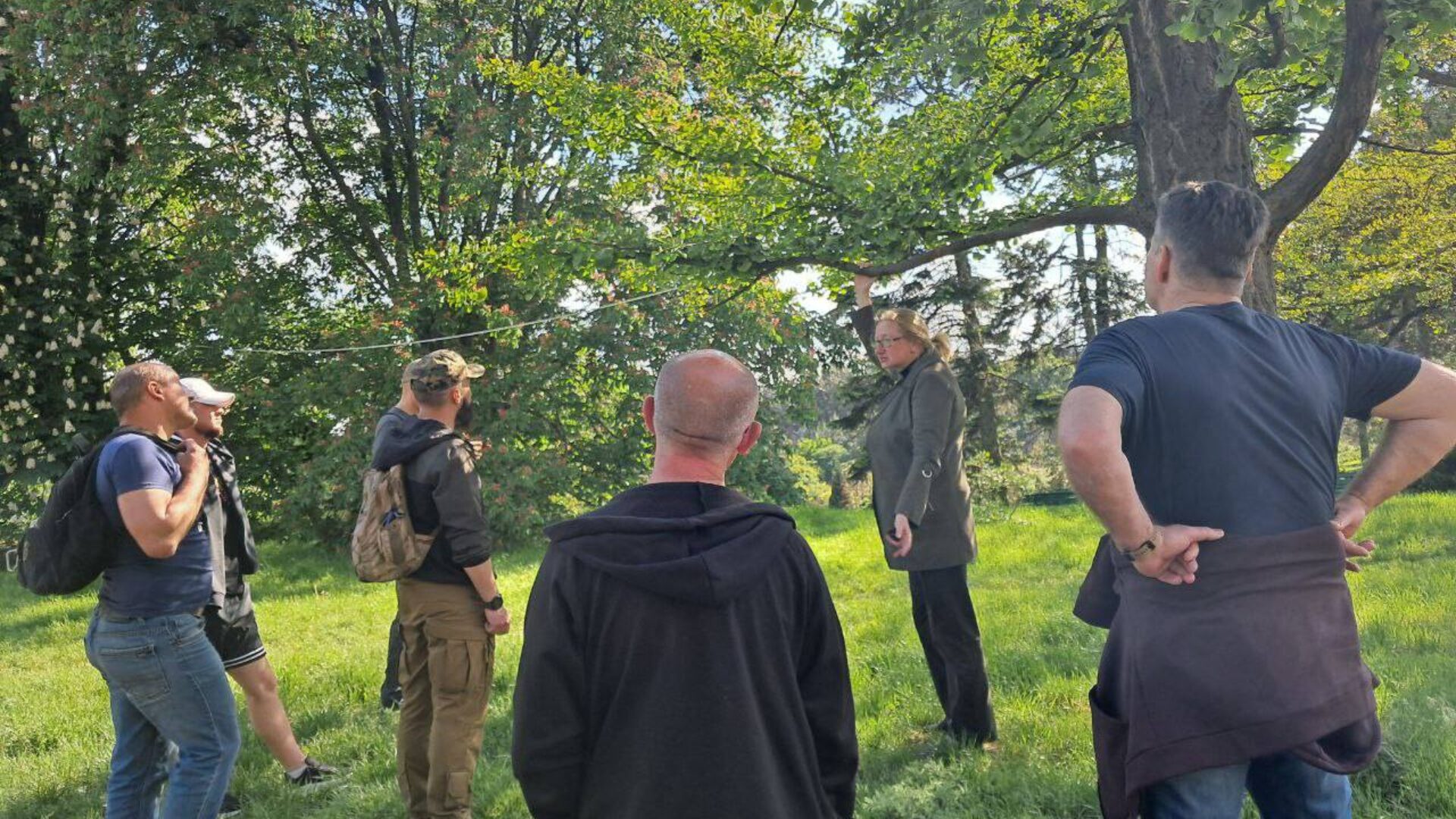
Alla Gnatiuk leads a therapeutic horticulture (TH) program for veterans at Kyiv Gryshko National Botanical Garden. Alla is one of ten Ukrainians to receive a TH certificate in 2025 through Partnerships for Nature, and is now helping to prepare a course to teach other Ukrainians about TH in early 2026.
Today, we are honoured to highlight the work of Partnerships for Nature, an organization building the capacity for therapeutic horticulture (TH) and nature-based healing across botanical gardens and community organizations in Ukraine, Armenia, and Georgia.
This blog shares who Partnerships for Nature is, what they have been achieving with their partners on the ground, and how our collaborative work is supporting locally led therapeutic horticulture programs.
Table of Contents
Who Partnerships for Nature Is
Partnerships for Nature (PN) is a collaborative, community-focused non-profit organization that works internationally to strengthen nature education, therapeutic horticulture, conservation awareness, and sustainable living. Based on Bainbridge Island, Washington, PN facilitates professional learning exchanges, mentorship, and long-term relationship-building among botanical gardens, educators, mental health practitioners, and community organizations across Ukraine, Armenia, Georgia and beyond.
Instead of offering short-term training, PN cultivates long-term, reciprocal collaboration. Practitioners learn alongside one another, local leaders shape programs within their cultural contexts, and skills are strengthened gradually so that programs can continue sustainably over time.
PN’s approach is based on long-term, reciprocal collaboration and the strengthening of local leadership. In practice, this means:
- Practitioners learn from one another across borders
- Local leaders shape programs for their cultural and community contexts
- Skills are strengthened over time, not in one-off workshops
- New initiatives grow in ways that are self-sustaining
This means that a sensory garden in Lviv may look different from a children’s nature-based program in Yerevan (or one in Canada or the US), and that’s the point. Each program reflects the people, place, needs, and strengths of its own community.
Over the past several years, PN has placed particular emphasis on nature’s role in emotional support and trauma recovery. This is especially true in Ukraine, where families, children, and the elderly, including many forcibly displaced from their homes, and their active duty or veteran loved ones, are experiencing extreme stress and upheaval. Botanical gardens have become places of grounding, continuity, and connection—spaces where people can spend time with one another, feel a sense of normalcy, and engage with nature at their own pace.
To build upon the role botanical gardens play in their communities, PN engaged a range of international partners to provide vital support—offering therapeutic horticulture education and consultation to garden staff, securing funding, and raising global awareness of Ukraine’s need and deep commitment to using nature as a pathway to national healing. These partners include the North Carolina Botanical Garden, the University of North Carolina’s Extension Gardener program, other botanical gardens across Canada and the US, Botanic Gardens Conservation International in the UK, and, most recently, Root in Nature.
Ukrainian botanical garden staff have enthusiastically embraced this training, applying new knowledge with passion, purpose, and hope. In 2024, five Ukrainian gardens launched pilot therapeutic horticulture programs, and over 2,000 participants were served. In 2025, ten Ukrainian staff members earned certificates in therapeutic horticulture, solidifying their dedication to advancing this healing practice within their institutions and across their communities.

Tony Allison, Partnerships for Nature Board President and Co-Founder, demonstrating a nature education program for staff members at Gryshko National Botanical Garden.
“Most of the people are PhD level botanists who are caring for a botanical garden. It’s a full-time, difficult job. They’ve done this training in therapeutic horticulture on top of everything else, and often on their own time because they care so much. They were eager to do something concrete and tangible to help their country and fellow Ukrainians.”

Tony Allison
Board President and Co-Founder, Partnerships for Nature (The Learning Network Nature & Health Alliance: “Roots of Resilience,” 2025)
At its core, PN and their partners are not simply introducing therapeutic horticulture; they’re helping to cultivate networks of practitioners who support one another, exchange knowledge, and grow programs rooted in community care, ecological awareness, and connection to living systems.
Why Botanical Gardens Are Key to Community Healing
Botanical gardens hold a familiar role in many communities, offering accessible spaces to engage with plants, landscape, and seasonal change. In Ukraine, these gardens have taken on an added significance. While outdoor environments can carry both comfort and uncertainty during wartime, therapeutic horticulture provides a structured and supported way to reconnect with nature at a pace that feels manageable.
Facilitators use predictable routines, choice-based participation, and co-regulation to help participants move gently toward connection and grounding. The garden becomes not an escape, but a place where people can show up as they are, alongside others who are doing the same.
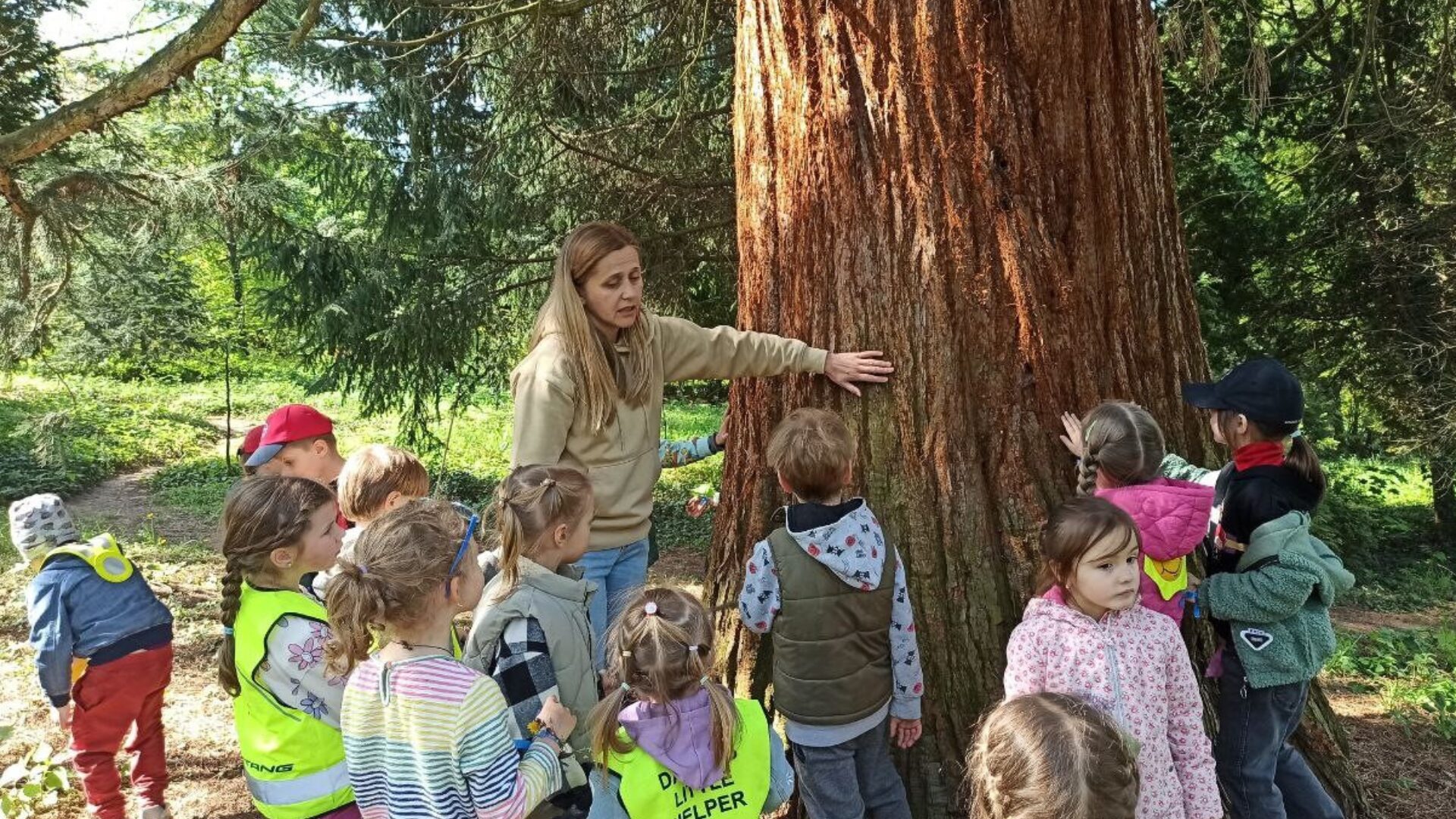
Myroslava Helesh leads a therapeutic horticulture (TH) program for children at Lviv University Botanical Garden. Myroslava will be co-leading a new TH course for other Ukrainians in early 2026.
This approach is effective because it is led by local practitioners who understand both the cultural and emotional context of the communities they support. Their leadership makes therapeutic horticulture relevant, trusted, and responsive to real needs.
Recent Accomplishments of Partnerships for Nature
Over the past two years, PN and their partners have supported the development of several therapeutic horticulture and nature-based education programs across multiple Ukrainian botanical gardens, ranging from the western regions to cities closer to the front lines in the east. Each garden designs programs in response to the needs of its own community. Some examples include:
- Sensory gardens and barefoot walking paths designed for grounding and nervous system regulation.
- Educational composting programs that bring children and adults together to learn by doing.
- Support groups for displaced families engaging in plant-based, hands-on activities.
- Nature-based programming for veterans, people experiencing trauma, and children with diverse developmental needs.
- Workshops and guided walks that promote ecological awareness, emotional expression, and social connection.
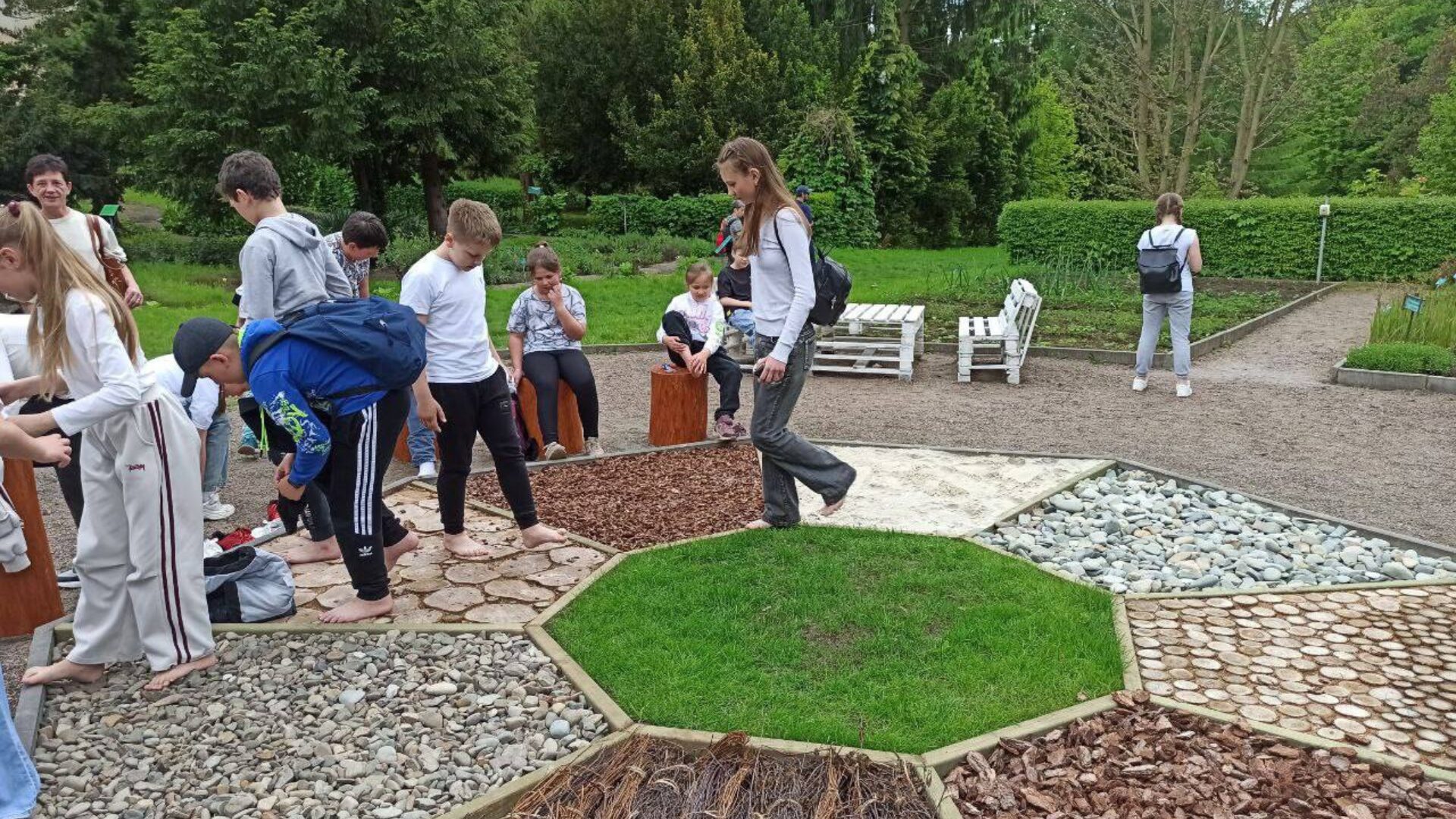
This tactile circle, designed and installed at Lviv University Botanical Garden with funds from a Partnerships for Nature “mini-grant,” has proven extremely popular with children and adults alike. It provides a rich, multi-sensory experience on natural surfaces, including for those with vision impairment.
Additionally, PN has facilitated mini-grants, professional training exchanges, on-site mentoring, and cross-garden collaboration. These efforts have resulted in a growing network of Ukrainian practitioners, both inside and outside of botanical gardens, who now support one another, share program models, and co-develop new ideas.
The Armenia Connection
PN’s work in Armenia began through collaboration with the Yerevan Botanical Garden to establish a therapeutic garden space for community use. Since then, the work has expanded to include partnerships with community-based organizations and mental health practitioners supporting individuals and families affected by conflict, grief, and ongoing stress. This is also where Root in Nature’s collaboration with PN deepened, providing therapeutic horticulture training and mentorship to support locally led program development.
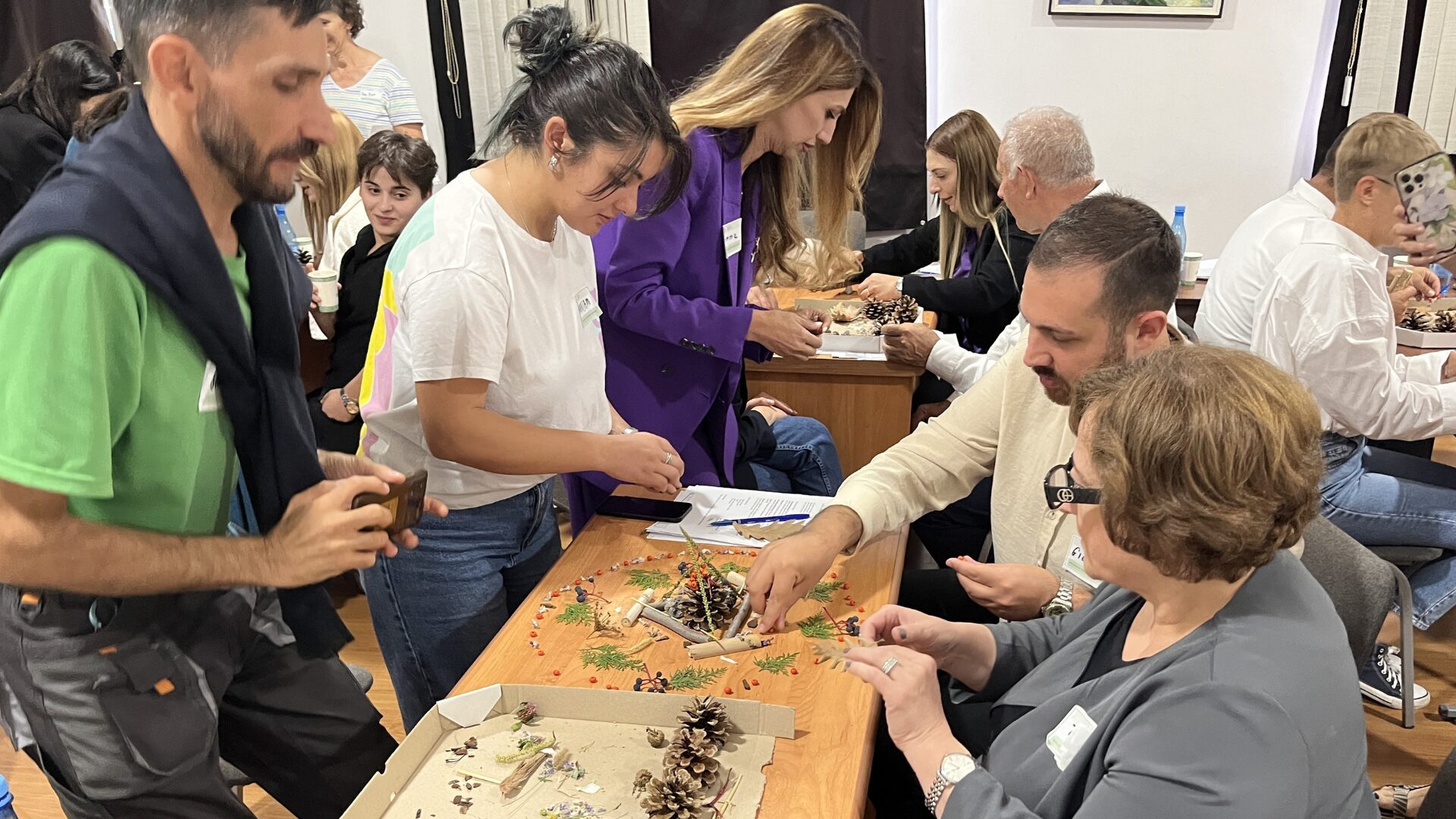
Participants work on a hands-on exercise during a therapeutic horticulture workshop at Yerevan Botanical Garden (Armenia) in October, 2024. The workshop was organized by Partnerships for Nature and led by Emilee Weaver and attracted participants from across Armenia and neighboring Georgia.
Root in Nature’s Role in This Partnership
Root in Nature has been working closely with PN to provide therapeutic horticulture training and ongoing professional development for practitioners in both Ukraine and Armenia – and eventually in Georgia, where strong interest in developing therapeutic horticulture is evident. Together, our shared aim is to support the establishment of sustainable, practitioner-led therapeutic horticulture programs that continue long-term, independent of external support.
Our Director of Learning & Community Engagement, Emilee Weaver, has played a key role in PN’s work in Ukraine and Armenia over the past two years. She has served as the primary therapeutic horticulture instructor and mentor for partners in both countries, even traveling to Armenia and to the border of Poland and Ukraine with PN in 2024 to personally meet with them and provide hands-on therapeutic horticulture training.
Her approach centers cultural relevance, trauma-informed practice, and adaptation of activities to fit each practitioner’s scope, skills, and community setting.
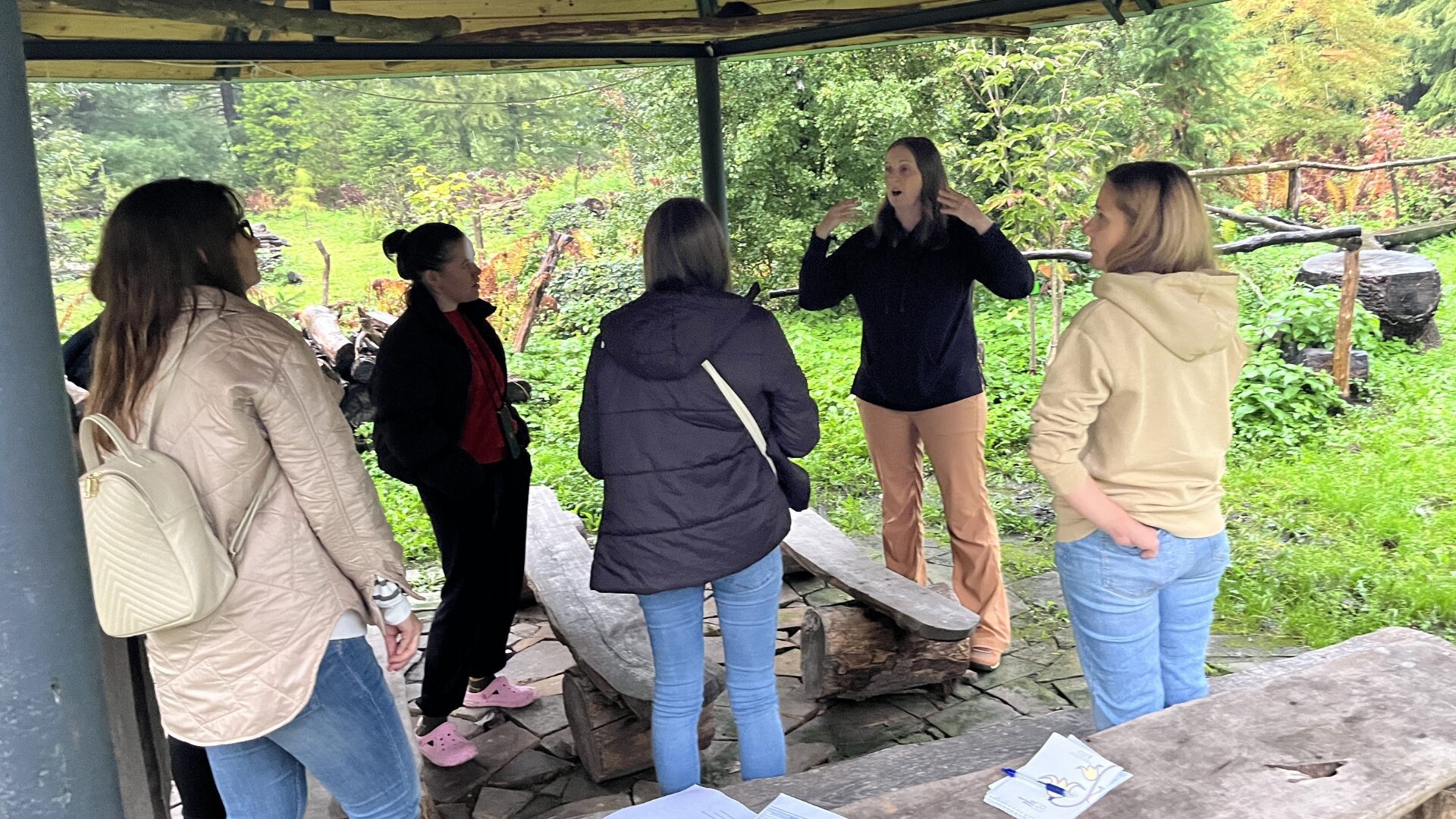
Emilee Weaver leads a therapeutic horticulture workshop for Ukrainians at Bolestrazyce Arboretum in southeast Poland in 2024. Fifteen Ukrainians from five botanical gardens made the trip to participate in the three-day workshop, which was organized and funded by Partnerships for Nature.
“They’ve been so receptive and so hardworking. They show up to every meeting—even if their lights are out because of an air raid. I really get the sense that they feel like this is their contribution, that this is the way that they can give back and serve their country. I think it’s really noble and beautiful.”
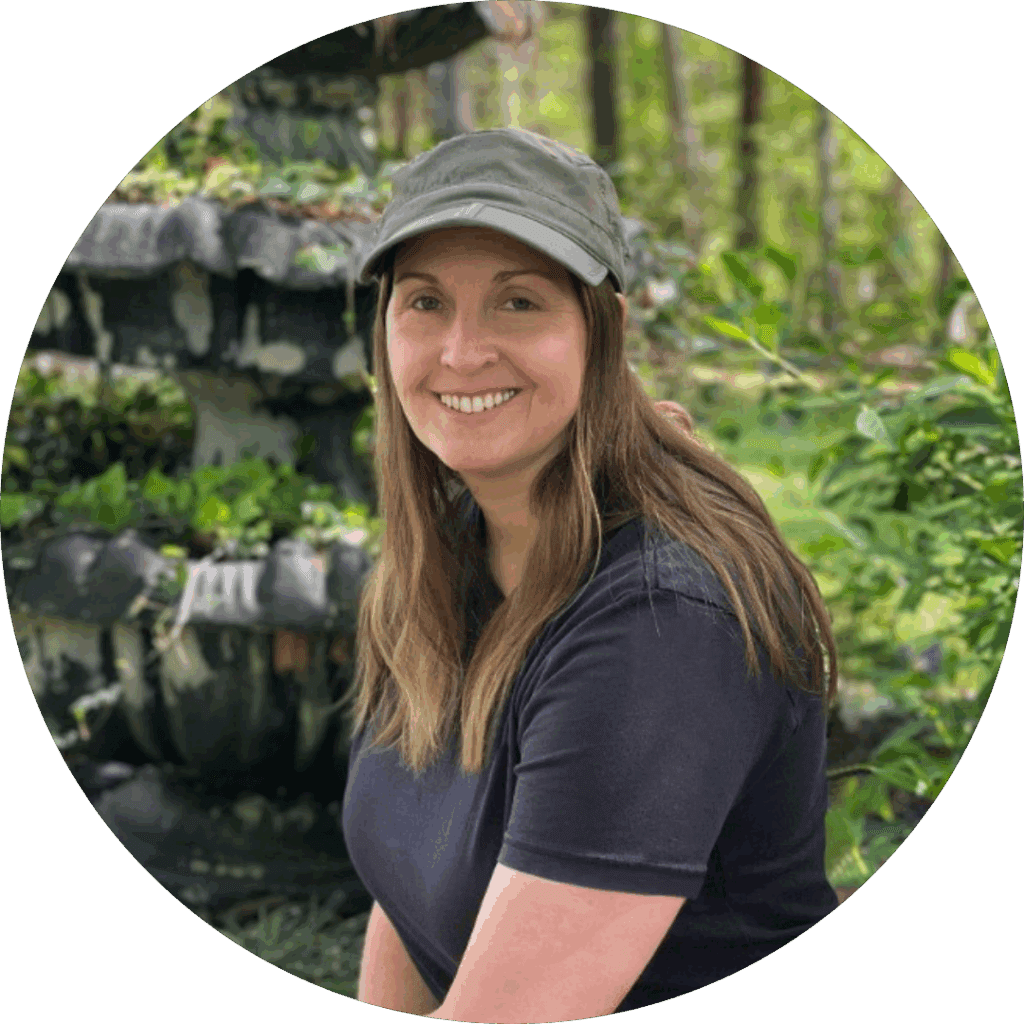
Emilee Weaver
Director of Learning and Community Engagement, Root in Nature (The Learning Network Nature & Health Alliance: “Roots of Resilience,” 2025)
Emilee has built relationships of trust and collaboration with partner educators and facilitators, many of whom are now implementing therapeutic horticulture programs within their own institutional contexts.
Scholarships for Armenian Practitioners
This fall, three English-speaking Armenian mental health professionals received scholarships from PN and Root in Nature to complete our Introduction to Therapeutic Horticulture course.
They have now completed the course and are beginning the Advancing Skills program.
These practitioners are already working in community support roles in Armenia. Their interest in therapeutic horticulture comes from real needs they are encountering in their programs. The training allows them to integrate plant-based activities into their work in ways that are meaningful, informed, and grounded in therapeutic facilitation principles.
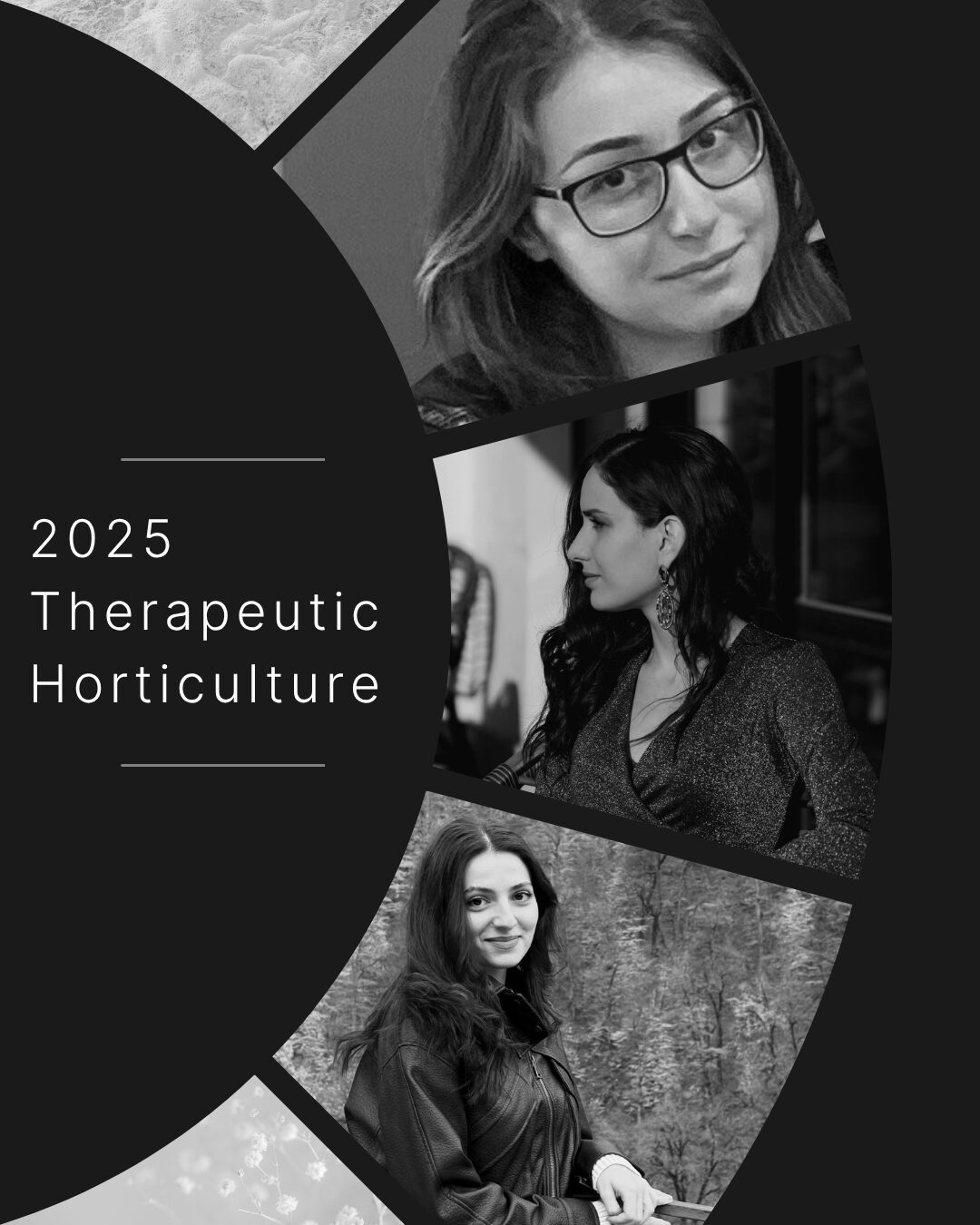
Three Armenians with training in psychology and a passion for plants are currently taking Root in Nature’s online courses in therapeutic horticulture. From top: Margo Sargsyan, Meline Sahakyan, and Syuzanna Gdoyan. The three received scholarships from Partnerships for Nature and RIN, and will be launching TH projects in Armenia in 2026.
Our hope is not to introduce something new from the outside, but to strengthen what is already happening and ensure practitioners have:
- A solid foundation in therapeutic activity design
- Access to a global peer community through the GrowTH Network
- Confidence in adapting therapeutic horticulture to their setting
- Ongoing learning and mentorship support
This is how skill-building becomes sustainable.
Stories of Practice and Impact
Therapeutic horticulture programs in Ukraine are shaped by both community need and lived experience. Practitioners, educators, and caregivers are supporting others while also navigating their own layers of stress and uncertainty. This shared reality has led to programming that is empathetic, grounded, and responsive to daily conditions.
Lada describes the importance of this work clearly:
“Ukraine urgently needs trained professionals in therapeutic horticulture. Our population is experiencing unprecedented levels of trauma, stress, and displacement, and nature-based therapies offer accessible, culturally appropriate, and effective pathways to healing and recovery. The Root in Nature program has been instrumental in my professional development and has directly enabled me to be a part of the project team who developed a Therapeutic garden in Ukraine.”

Lada Mendrukh
(Source: Letter from Lada Mendrukh to Root in Nature, 2025)
Her words reflect what many practitioners across Ukraine are expressing: there is a strong professional desire to help, alongside a need for training, language, and frameworks that make this work safe, grounded, and sustainable.

Yulia Galis leads a therapeutic horticulture (TH) exercise for teenagers at Odesa University Botanical Garden in Ukraine . Yulia began as a volunteer at the garden, then began studying TH, moved up to a staff position, and received a TH certificate in 2025 with Partnerships for Nature’s assistance.
And the impact is visible:
- Children participating in sensory garden activities are becoming more relaxed and communicative over time.
- Veterans are finding meaning in steady, hands-on work with soil, tools, and living plants.
- Elders are forming deep social connections in garden-based circles where they can share conversation at their own pace.
- Educators and mental health practitioners are reporting renewed purpose in their work and greater confidence in facilitating supportive group experiences.
“There are so many different benefits—emotional, cognitive, social, physical, vocational, spiritual,” she remarks. “That’s the difference between therapeutic horticulture and regular gardening: you’re working towards a specific goal.”

Emilee Weaver
Director of Learning and Community Engagement, Root in Nature (Nature & Health Alliance: “Roots of Resilience,” 2025)
None of these changes are dramatic or sudden. They emerge gradually, through presence, repetition, and trust. They are shaped by the people who lead the work, the relationships they form, and the communities they belong to.
This is why PN’s capacity-building approach matters. It is not about delivering a program and moving on. It is about nurturing the people who will continue this work for years to come and ensuring they feel resourced, connected, and supported.
And it is why Root in Nature is well-positioned to be part of this effort.
Where the Work Is Heading
The work unfolding in Ukraine and Armenia is still in its early stages, yet the momentum is clear. What began as small pilot groups and exploratory sessions is growing into a coordinated network of practitioners who are supporting one another, sharing program ideas, and strengthening their confidence as facilitators.
The next stage of this partnership is focused on deepening local leadership.
Practitioners who have completed therapeutic horticulture certificates are now shaping programs that reflect their communities, languages, histories, botanical heritage, and ways of healing. This means that therapeutic horticulture in Ukraine will continue to develop in ways that feel Ukrainian. The same is true in Armenia. This is not a model being replicated; it is a practice being grown from within.
Over the coming year, PN and Root in Nature will continue to support the development of locally led therapeutic horticulture programs by:
- Providing ongoing mentorship and peer collaboration for facilitators
- Strengthening practical skills in designing and leading therapeutic horticulture activities
- Developing resources that reflect cultural and community contexts
- Supporting partnerships with local organizations and identifying funding opportunities
- Creating pathways for experienced facilitators to train future cohorts
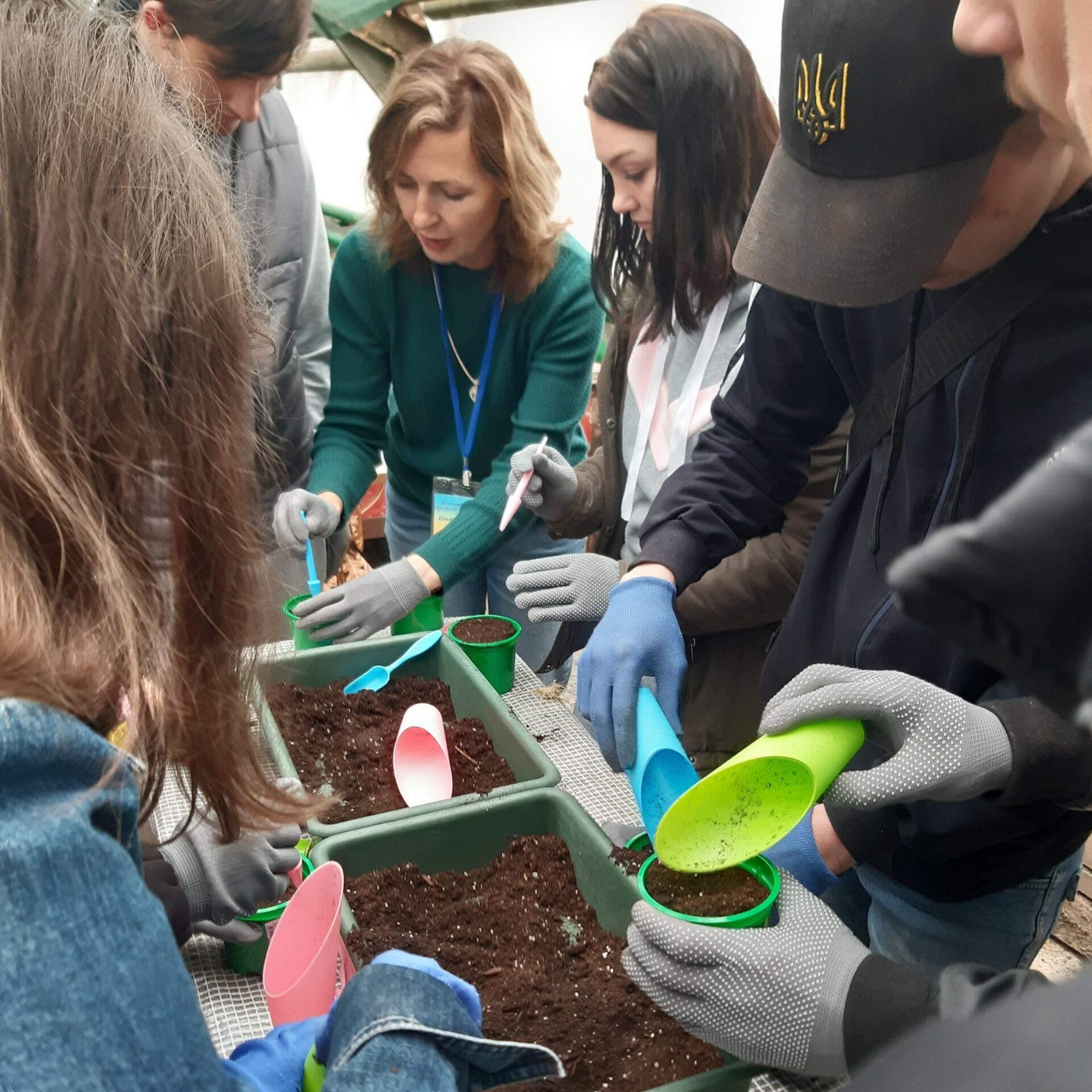
The next step is to make sure these practitioners have the ongoing support they need to continue, refine, and expand their work. This is where our community — including those reading this — can play a meaningful role.
As part of this next phase, PN is developing plans to translate and adapt Root in Nature’s online curriculum for wider use in Ukraine. This work would include mentorship from current Ukrainian therapeutic horticulture practitioners, alongside continued guidance from Root in Nature.
The intention is to support the growth of a new, larger cohort of Ukrainians who are studying, practicing, and eventually teaching therapeutic horticulture to others. In a country of 40 million experiencing war and displacement, the need for restorative, community-based practices will only increase, both in the present and in the years ahead.
The scope and timing of this translation and training initiative will depend on available funding, including donor support.
How You Can Support This Work: Giving Tuesday
The growth of therapeutic horticulture in Ukraine and Armenia is happening because people on the ground are choosing to show up for one another. Practitioners are designing and facilitating programs during and after long workdays, gardens are opening their gates to thousands of displaced citizens, and community leaders are offering their time and presence with care.
What makes this work sustainable is ongoing training, mentorship, and connection. This is where the Root in Nature community can make a real difference.
On Giving Tuesday (December 2nd), Root in Nature will be donating 50% of all course proceeds to PN to support the continued development of therapeutic horticulture programs across Ukraine and Armenia.
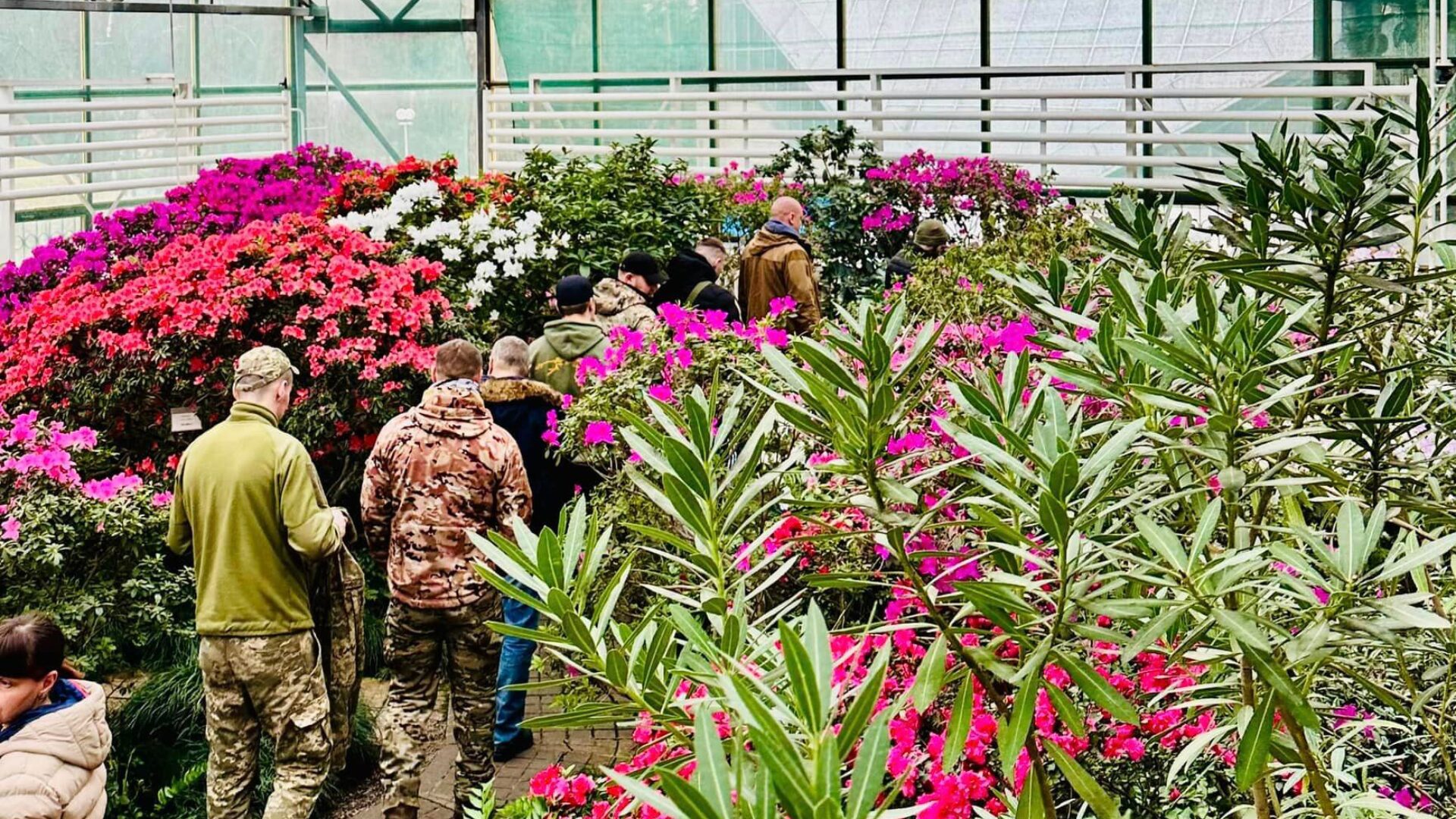
A group of soldiers on a tour of the greenhouse at Gryshko National Botanical Garden in Kyiv. Staff members at the garden have received training in therapeutic horticulture through Partnerships for Nature and are expanding their programs to help Ukrainians heal from the trauma and losses of war.
If you have been thinking about taking the Introduction to Therapeutic Horticulture course, December 2nd is a meaningful day to do it. Your learning becomes part of a larger effort to ensure local practitioners feel supported, prepared, and connected as they continue their work.
Ways to Support:
- Make a direct donation to Partnerships for Nature. Every contribution supports training, mentorship, and practitioner networks”:
- Enroll in any Root in Nature course on December 2nd when 50% of proceeds go directly to Partnerships for Nature:
- Share this story with someone who would understand the importance of nature-based community healing.
Whether the contribution is financial, relational, or in amplification, it helps create continuity for the people doing this work every day. And it lets practitioners in Ukraine and Armenia know they are not doing this alone.
Closing Reflection
The practitioners leading this work are doing so while experiencing the same uncertainty and stress as their participants. Their programs are relational, steady, and grounded in care. This is not outside support being brought in; it is local leadership being resourced and strengthened.
As our dear member Lada Mendrukh, a practitioner leading the development of a therapeutic garden in Kyiv, shared, this training and collaboration has given her and others “the foundation for our work in using nature-based interventions as effective rehabilitation tools for diverse populations facing trauma, displacement, and the ongoing challenges of war.”
Her words reflect something essential: this is not a story of outside organizations “bringing” healing to communities. It is about local leaders who are choosing, every day, to cultivate places of steadiness and care, even in circumstances of hardship.
The role of PN, and of Root in Nature through our training and mentorship, is to stand with these practitioners, shoulder to shoulder; to share resources, to learn alongside them, and to support their confidence as facilitators and leaders.
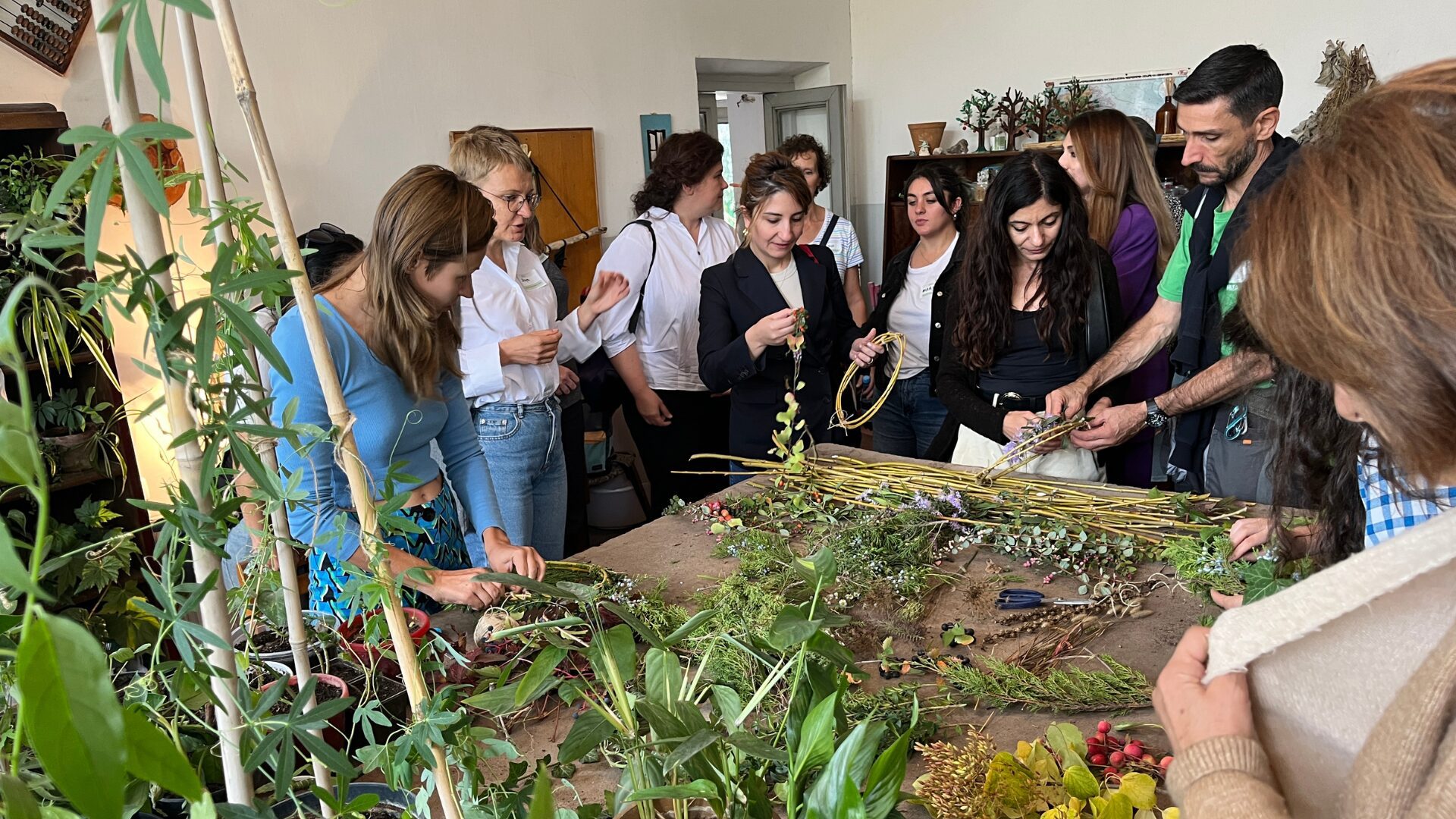
Zoya Dutova, second from left, leads a demonstration of plants and techniques used in therapeutic horticulture (TH) during a workshop at Yerevan Botanical Garden in 2024. With support from Partnerships for Nature, Zoya, a highly trained botanist, studied TH and designed the garden’s first TH site — possibly the first in Armenia!
We are grateful to be in partnership with people and organizations who hold this work with such clarity and integrity.
And we are grateful to you for being part of a wider community that believes in the restorative power of nature and relationship-based care. By learning, practicing, sharing, and supporting this work, you help make these programs possible.
Thank you for being here, and for being part of a community that continues to grow in care and connection, wherever we are in the world.

